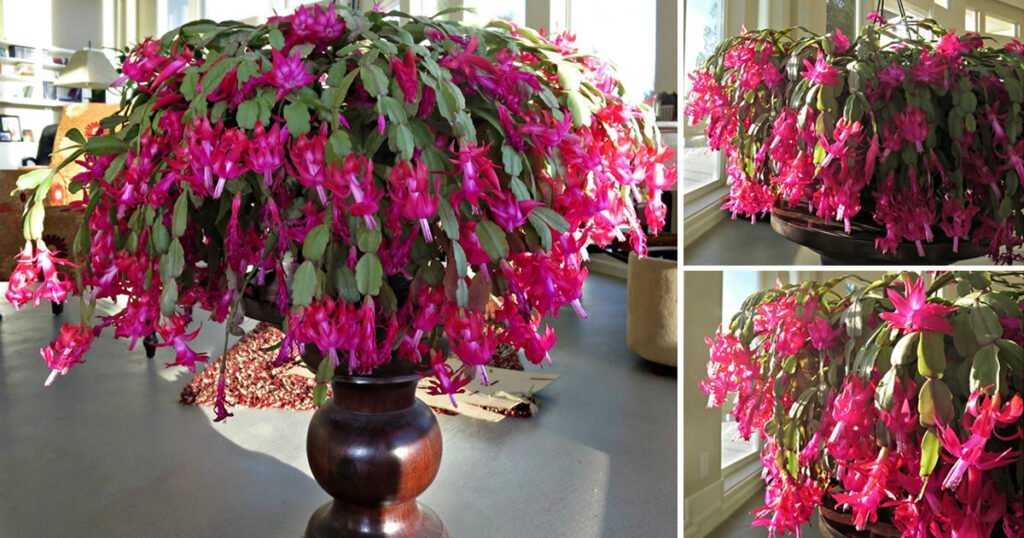Christmas Cactus (Schlumbergera bridgessii) is a delightful winter-flowering houseplant that can bring vibrant color to your indoor spaces. Not only is it easy to care for, but it’s also simple to propagate and can be encouraged to bloom continuously with a few tricks. Here’s a guide on how to propagate and care for your Christmas Cactus for a healthy and exuberant display of flowers.
Propagation:
- Select a Healthy Segment: Choose a small “Y”-shaped segment from the tips of a healthy Christmas Cactus stem for propagation.
- Prepare Potting Soil: Plant the segment, cut to a quarter of its length, in slightly sandy potting soil. Ensure the soil is evenly moist.
- Provide Adequate Light: Place the potted segment in a bright location, but avoid direct sunlight.
- Root Development: Over the course of a few weeks, the segment should develop roots and show signs of growth. Once it has established roots, you can transfer it to a new pot with a mixture of soil, compost, and sand.
Caring for Christmas Cactus:
- Light: Christmas Cacti adapt well to low-light conditions but produce more flowers in brighter environments. Avoid direct sunlight, which can scorch the leaves. A well-protected, bright corner is ideal.
- Watering: Proper watering is crucial. In spring and summer, water your Christmas Cactus frequently and thoroughly, ensuring that the soil remains consistently moist. Avoid water stagnation and never let the soil dry out completely, as this can lead to root rot.
- Temperature and Humidity: Maintain temperatures between 15°C and 21°C (59°F to 70°F) and provide medium humidity. Placing a pebble tray filled with water under the pot can help increase humidity.
- Dormancy Period: After the Christmas Cactus has finished flowering (typically in the fall), initiate a dormancy period. Reduce watering and provide at least 12-14 hours of darkness daily. Maintain a temperature between 10°C and 12°C (50°F to 54°F). Keep the plant away from heat sources and cold drafts.

